Sometimes, explaining the appeal of a game can take a lot of effort. You might talk about how the gameplay systems work together, or how the setting and plot build up, or how particular mechanics blossom after spending some time with them. Then you have games that make it easy like Flowstone Saga. It’s a JRPG where the battles are Tetris, to put it plainly. There’s a lot more to talk about, but I suspect many will be sold on the game with just with that basic description alone. Luckily, Flowstone Saga does a good job of delivering on its fun concept.
The protagonist of the tale is Mirai, a young woman who has only recently come to live in the town of New Riverstone. The town is part of Ocean’s End, a backwater place that doesn’t see a whole lot of people coming or going. Mirai and her pet Sprig are out adventuring one day when they stumble across a buried ruin. Looking for a means of defending herself against a pursuing monster, Mirai happens to grab the Flowstone. A mysterious energy contained within grants her a number of powers, not the least of which being the ability to fight. This discovery naturally kicks off a series of events that will not only rock the world but also reveal secrets about Mirai herself.
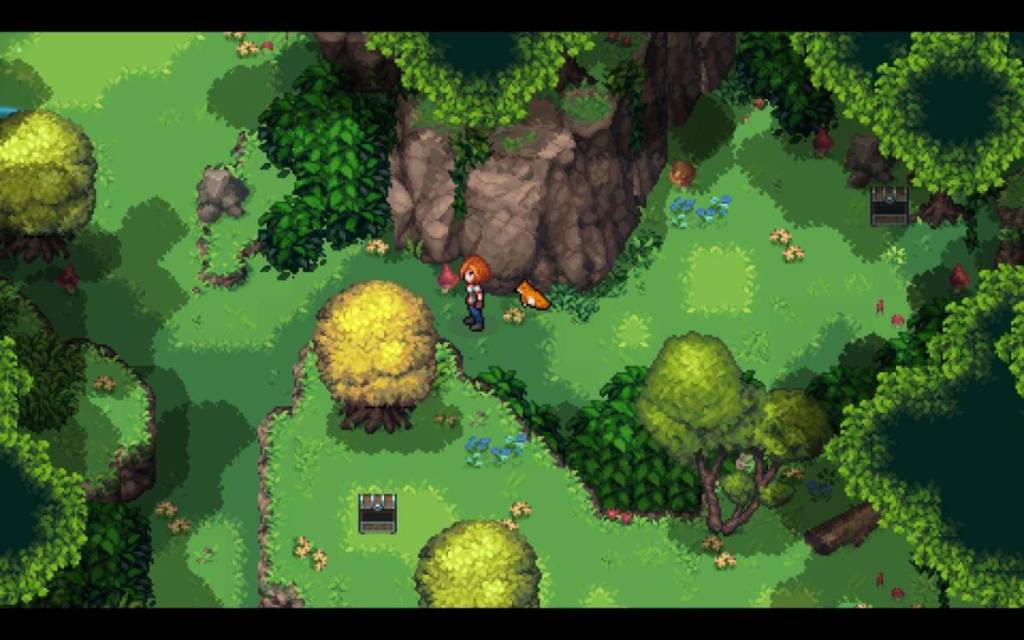
Flowstone Saga makes a great first impression. It visuals are lush, calling to mind some of the better 16-bit games in the genre. Its soundtrack is energetic and catchy. You don’t have to wait around long before you’re thrown into your first battle, since the story starts in the middle of the action before flashing back. There’s a brisk pace to it right from the get-go. The initial story set-up is certainly intriguing, and the dialog in these opening scenes reads well. A solid start, to be sure. For the most part it keeps things up through the course of the adventure, which takes about ten hours to complete.
Before we get to the many other aspects of the game, I want to go over the battle system. It’s the eye-catching element, after all. While the shapes aren’t a one-to-one with those of Tetris, anyone who has played that game will get the basic gist of what to do without being told. You have to make lines to attack your foes. The urge to set up big plays might be strong, but don’t fool around too long. The enemies will be launching attacks of their own, and they aren’t going to wait. Those attacks deal damage of course, but they’ll also often throw clutter into the play field. That clutter has varying effects, and none of them are good for you.
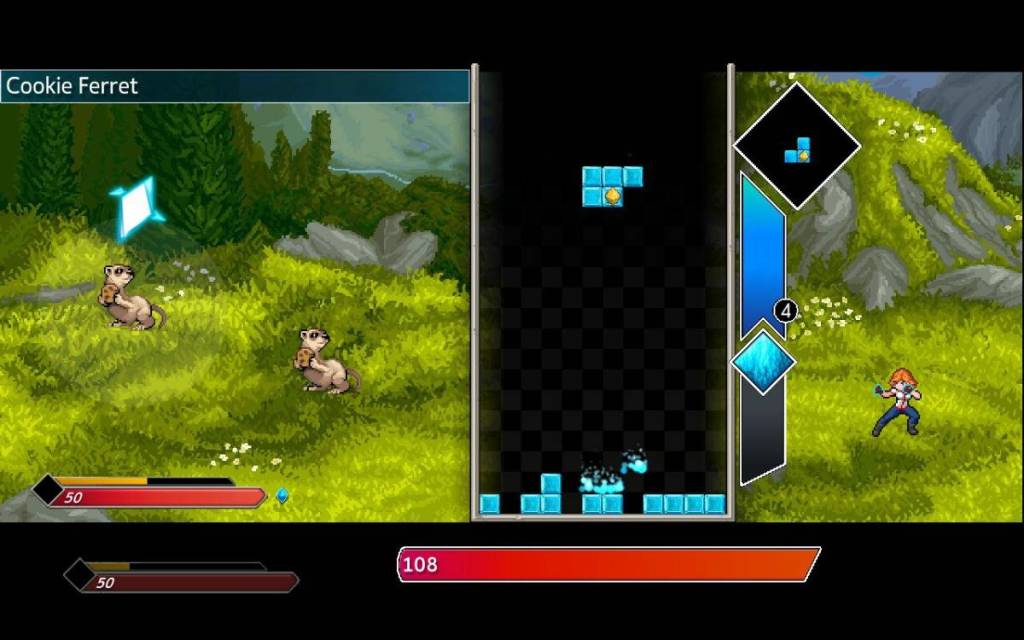
So far, so good. There’s more to it than that, however. The pieces will also carry Link Crystals, and if you place the blocks in such a way that three of them touch, you’ll gain Heat. That makes your attacks more powerful, so you’ll want to line those Link Crystals up as often as possible. As you make matches, you’ll fill up a gauge that allows you to use one of a selection of powers. When you start you’ll only have one, but as you play you’ll get access to more. These can do things like give you a straight line piece or throw pieces onto the field that, when matched, will hit your enemies with an elemental attack. There’s also the Flask, which again tosses pieces onto the field that give varying effects when matched.
Essentially, there’s quite a bit going on here besides a simple game of clearing lines. It can be a little overwhelming until you get the hang of things, but unless you go right for the hardest of the three selectable difficulty levels from the start you should have it sorted before things get hairy. Just keep matching those lines and you’ll be fine. When you hit the point where you’re not fine, you can start making use of the other systems. If you play on the recommended difficulty, that point may not ever come. Most players who have some experience with both sides of the mash-up here will likely want to play the second difficulty level at a minimum to keep things exciting. You can change at any time though, so feel free to take it easy while you learn.
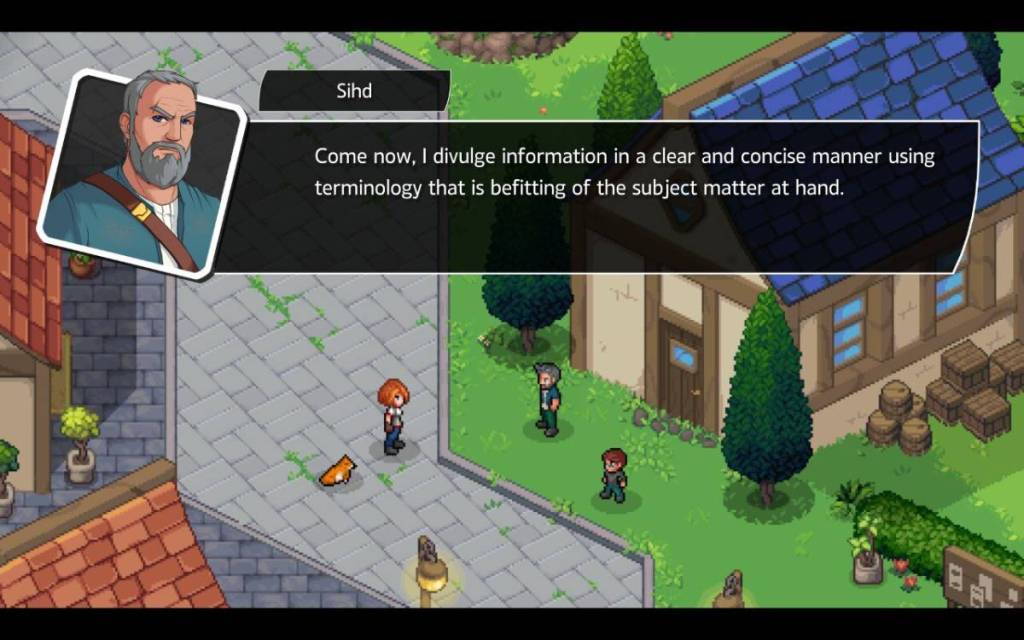
Flowstone Saga is far bigger than its battle system. That’s even true for the Tetris-style portion of the game, which is also put into use for gathering resources and completing build-a-shape puzzles you’ll find scattered about. Mirai’s hometown of New Riverstone plays a major role in the game. It’s where she picks up new quests, mingles with the townsfolk, buys new equipment, or just chills in her personally-decorated house. As you play the game and complete requests, the town will grow and gain new facilities, which in turn unlock more features of the game.
Finishing those requests often come down to gathering the necessary resources or items the townspeople ask for. Resources can be found laying around, but you can always gather more by playing a timed mini-game. The special items work as a motivator to send you to the many other locations in Ocean’s End, since most of them are in the possession of a boss monster waiting at the end. Some requests are more direct, sending you somewhere to move the plot forward. You’ll travel to these locations via a map that lists each spot as it opens up.
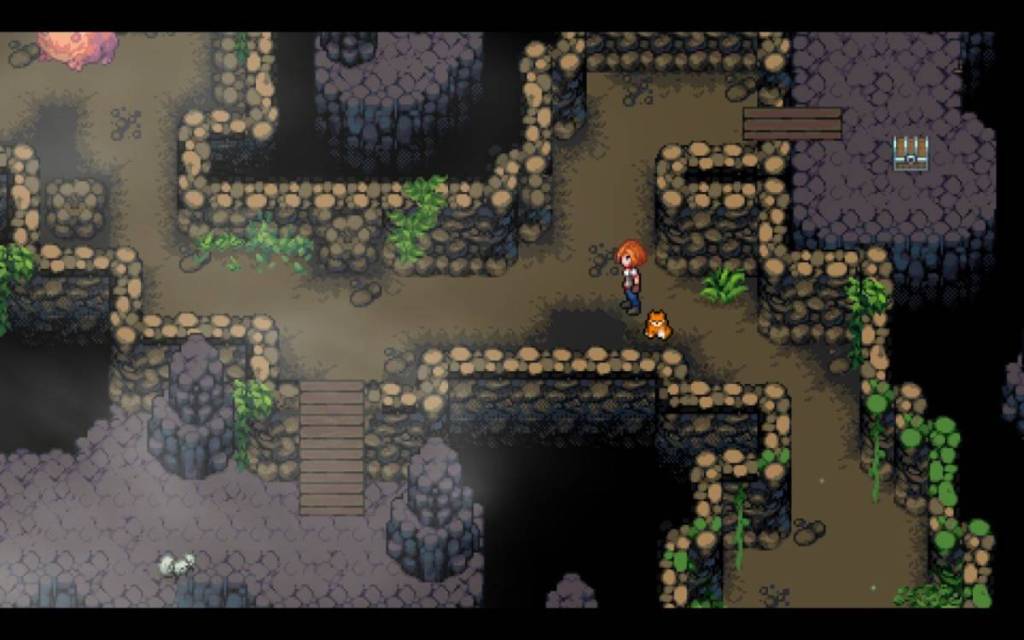
The dungeon designs are solid enough, with some little secrets to find that will reward you with treasures or stat increases. Enemies are visible on the map, so you can try to avoid encounters if you like. You’ll also be able to see the boss, and their size usually makes it very clear that they are not a normal encounter. As you make your way through, you’ll get the odd proper puzzle to deal with, often involving switches, plus the aforementioned build-a-shape mini-games. In those, you’ll be given an outlined shape and a selection of pieces. You’ll have to figure out how to place them to create the shape. You can also try as many times as you like, making these more of a way to spice things up during the dungeon runs than anything else. These puzzles also indirectly demonstrate one of the many accessibility features of the game.
You can, if you choose, play the game in a turn-based mode where the pieces don’t fall during battle. Instead, you can take your time to place each piece, and the enemies will simply attack after a certain number of pieces have been placed. It’s a nice feature for those who might not be so good at Tetris, a quality which would otherwise put you at a grave disadvantage in Flowstone Saga. Combined with the various difficulty options, you have a lot of say in how challenging or relaxing you would like the experience to be overall.
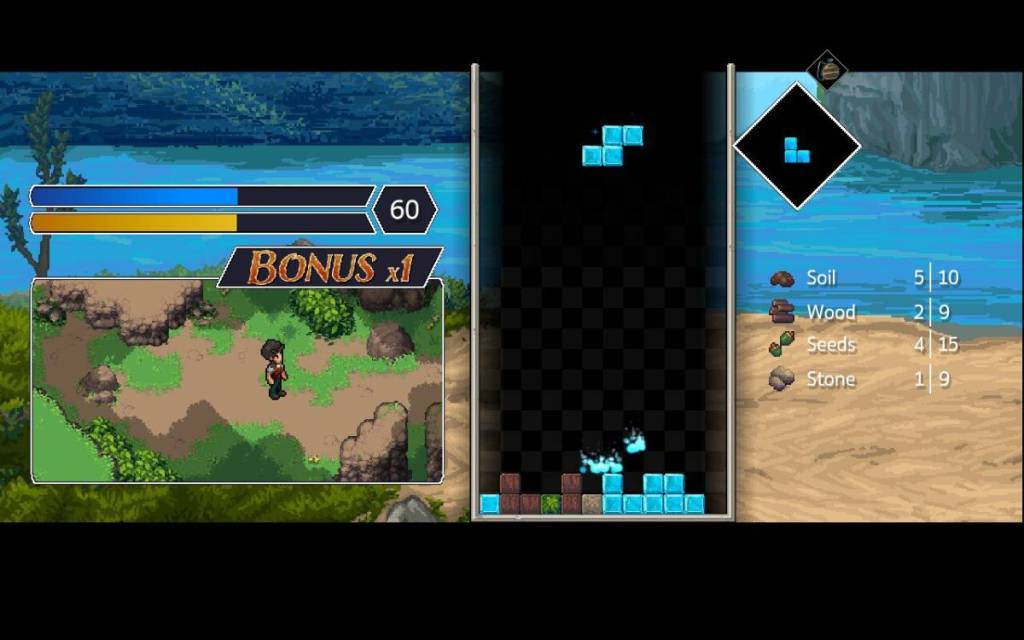
One of the best things about Flowstone Saga is in how breezy it feels. The run time is tight, so it avoids overstaying its welcome. It’s constantly introducing new systems or abilities, keeping things lively. While you probably don’t need to engage with most of them to finish the game, they’re welcome all the same. There was a real risk here that the line-clearing battle system could have gotten too repetitive over time, but it never gets much of a chance to do so thanks to all of this. Just when the dust settles in the early going, you unlock a job system. Then, you unlock additional elements. A bit later, you’ve unlocked battle helpers. It keeps adding new twists for quite a while into the adventure.
While Flowstone Saga is mechanically rich, perhaps even to an excess, its narrative left me wanting more. The dialog is competently written and the overarching plot is engaging if somewhat predictable, but the characters and their interactions often came off slightly artificial and banal. It’s not terrible, but it was difficult to get invested in a lot of the conversations between characters as a result. The upfront excitement and mystery didn’t pay off as well as I’d hoped for. By the end I was playing more for my enjoyment of the gameplay than to see where the story went.
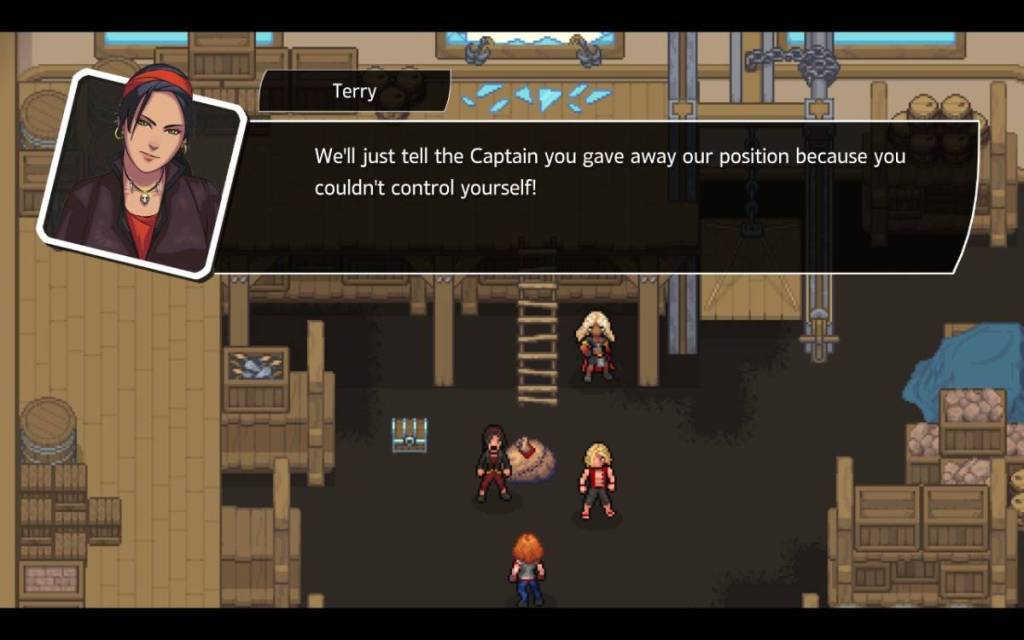
Flowstone Saga is a charming blend of RPG and puzzle game with a zippy pace and lots of mechanics to engage with. The presentation is great, with colorful, detailed visuals and a strong soundtrack. The story doesn’t hit the same high notes as the rest of the game, but it does its job well enough to keep you engaged for the duration of this relatively brief yet enjoyable journey. In some ways, it feels like the game could have gone longer and explored some of its mechanics more thoroughly, but I give it credit for wrapping up before it got repetitive. If you’re looking for a lighter bite between all of the gigantic RPGs releasing these days, this should fit the bill nicely.
Flowstone Saga is available for PCs.
Flowstone Saga
While its story and characters fall a little flat, Flowstone Saga makes up for it with its compelling blend of JRPG mechanics and falling block puzzle gameplay. The brisk pace make this an excellent choice for those seeking a lighter bite.
Pros
- A novel blend of familiar gameplay styles.
- The build-a-shape puzzles were always a nice change of pace.
- It does a really good job of trying to mix up the battles.